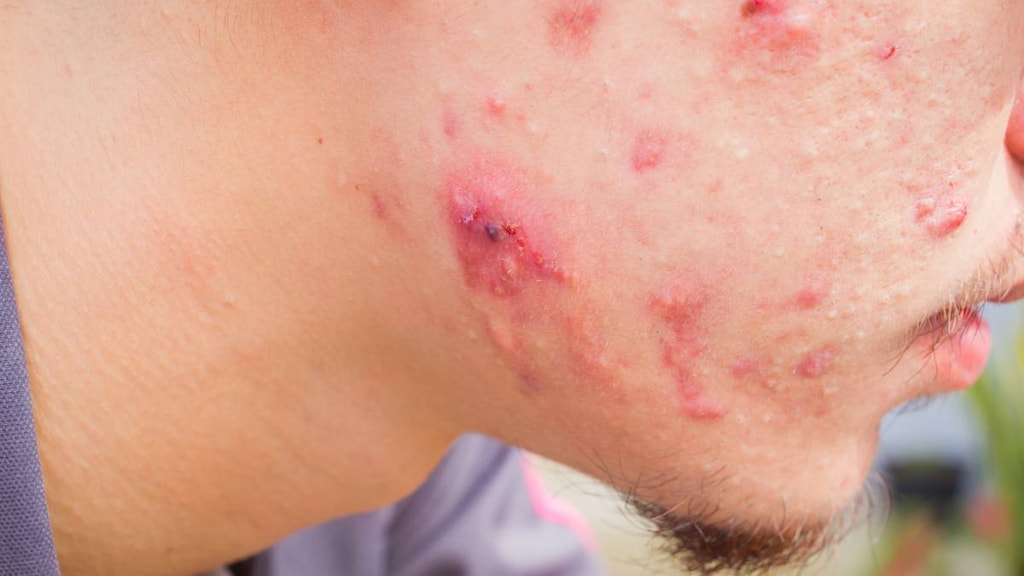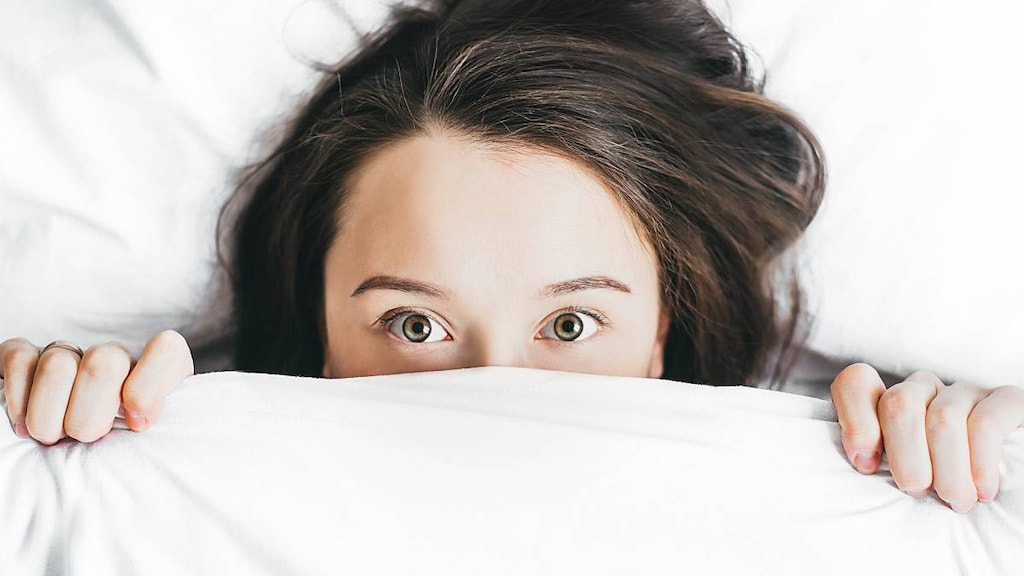Dosage Forms
Excipient information presented when available (limited, particularly for generics); consult specific product labeling. [DSC] = Discontinued product
Gel, External:
Erygel: 2% (30 g, 60 g)
Generic: 2% (30 g, 60 g)
Pad, External:
Ery: 2% (60 ea) [contains propylene glycol]
Generic: 2% (60 ea [DSC])
Solution, External:
Generic: 2% (60 mL)
Pharmacology
Mechanism of Action
Antibacterial activity is due to inhibition of RNA-dependent protein synthesis at the chain elongation step; binds to the 50S ribosomal subunit resulting in blockage of transpeptidation. Alcohol component induces skin drying and peeling.
Use: Labeled Indications
Acne: Treatment of acne vulgaris
Note: The American Academy of Dermatology acne guidelines recommend erythromycin (topical) be used in conjunction with other therapies (not as monotherapy) due to the risk of bacterial resistance (AAD [Zaenglein 2016]).
Contraindications
Hypersensitivity to erythromycin or any component of the formulation
Documentation of allergenic cross-reactivity for erythromycin is limited. However, because of similarities in chemical structure and/or pharmacologic actions, the possibility of cross-sensitivity cannot be ruled out with certainty.
Dosage and Administration
Dosing: Adult
Acne: Topical: Note: The American Academy of Dermatology acne guidelines recommend erythromycin (topical) be used in conjunction with other therapies (not as monotherapy) due to the risk of bacterial resistance (AAD [Zaenglein 2016]).
Gel: Apply sparingly as a thin film over the affected area once or twice daily. Therapeutic response may take up to 6 to 8 weeks; discontinue use if no improvement after 6 to 8 weeks or if condition worsens.
Ointment, solution: Apply to affected area twice daily (morning and evening); drying and peeling may be controlled by reducing the frequency of application.
Pads: Rub pad over affected areas twice daily (morning and evening); additional pads may be used, if needed.
Erysol [Canadian product]: Apply thin film to affected area twice daily (morning and evening after the skin has been thoroughly washed and patted dry); may decrease to once daily if irritation develops at application site. Therapeutic response may take up to 6 to 8 weeks; discontinue use if no improvement after 6 to 8 weeks or if condition worsens. Maximum therapy duration: 3 months
Dosing: Geriatric
Refer to adult dosing.
Dosing: Pediatric
Note: Akne-Mycin ointment has been discontinued in the US for more than 1 year.
Acne vulgaris: Limited data available (Eichenfield 2013): Note: Due to emerging resistance patterns, should not typically be used as monotherapy for the management of acne vulgaris (Eichenfield 2013; Zaenglein 2016). Children ≥7 years and Adolescents:
Gel: Apply as a thin film over the affected area once or twice daily. Therapeutic response may take several weeks (up to 6 to 8 weeks); discontinue use if no improvement after 6 to 8 weeks or if condition worsens
Ointment, solution: Apply over the affected area twice daily (morning and evening); drying and peeling may be controlled by reducing frequency of application
Pads (pledgets): Rub pad over affected area twice daily (morning and evening); additional pads may be used if needed
Administration
Topical: Prior to treatment, thoroughly wash affected area with mild soap and warm water, rinse, and pat dry. Discard pad after single use. Wash hands after use. Avoid contact with the eyes, nose, mouth and other mucous membranes, and broken skin.
Storage
Ery: Store at 20°C to 25°C (68°F to 77°F).
Erygel: Store at 20°C to 25°C (68°F to 77°F). Protect from heat and flame.
Erysol [Canadian product]: Store at 15°C to 30°C (59°F to 86°F). Protect from heat and flame.
Drug Interactions
Clindamycin (Topical): Erythromycin (Topical) may diminish the therapeutic effect of Clindamycin (Topical). Avoid combination
Isotretinoin (Topical): May enhance the adverse/toxic effect of Erythromycin (Topical). Monitor therapy
Adverse Reactions
Frequency not defined.
Dermatologic: Desquamation, erythema, exfoliation of skin, oily skin, pruritus, rough skin (leather appearance), skin fissure (around mouth), skin tenderness, urticaria, xeroderma
Local: Application site irritation (includes local dryness, localized burning, localized erythema, localized tenderness, stinging of the skin)
Ophthalmic: Eye irritation
<1%, postmarketing and/or case reports: Abdominal distress, abdominal pain, diarrhea, facial edema, hypersensitivity reaction, skin rash
Warnings/Precautions
Concerns related to adverse effects:
- Superinfection: Prolonged use may result in fungal or bacterial superinfection, including C. difficile-associated diarrhea (CDAD) and pseudomembranous colitis; CDAD has been observed >2 months postantibiotic treatment. Discontinue if significant diarrhea, abdominal cramps, or passage of blood and mucus occurs.
Concurrent drug therapy issues:
- Concurrent topical acne therapy: Use with caution especially with peeling, desquamating or abrasive agents; irritation may be cumulative. Discontinue use if irritation or dermatitis occurs.
Dosage form specific issues:
- Topical gel: May be flammable. Keep away from heat and flame.
Other warnings/precautions:
- Appropriate use: For topical use only; not for ophthalmic use. Avoid contact with eyes, nose, mouth, mucous membranes, or broken skin. Lack of improvement or worsening of acne may indicate microbial resistance. Alternative therapy may be required for severe acne (eg, nodular). Consider alternate therapy in patients with poor tolerance to macrolides or clindamycin. In the treatment of acne, American Academy of Dermatology acne guidelines recommend erythromycin (topical) be used in conjunction with other therapies (not as monotherapy) due to the risk of bacterial resistance. If given for mild acne, erythromycin (topical) should be used in combination with benzoyl peroxide. If given for moderate to severe acne, it should be used in combination with a topical retinoid or systemic antibiotic agent (AAD [Zaenglein 2016]).
Pregnancy
Pregnancy Considerations
The amount of erythromycin available systemically following topical application is considered to be very low (Akhavan 2003). Systemic absorption would be required in order for erythromycin to cross the placenta and reach the fetus.
Topical erythromycin may be used for the treatment of acne in pregnancy (AAD [Zaenglein 2016]; Eichenfield 2013).
Patient Education
- Discuss specific use of drug and side effects with patient as it relates to treatment. (HCAHPS: During this hospital stay, were you given any medicine that you had not taken before? Before giving you any new medicine, how often did hospital staff tell you what the medicine was for? How often did hospital staff describe possible side effects in a way you could understand?)
- Patient may experience dry skin, skin irritation, itching, oily skin, or peeling. Have patient report immediately to prescriber eye irritation or signs of colitis (abdominal pain or cramps, severe diarrhea or watery stools, or bloody stools) (HCAHPS).
- Educate patient about signs of a significant reaction (eg, wheezing; chest tightness; fever; itching; bad cough; blue skin color; seizures; or swelling of face, lips, tongue, or throat). Note: This is not a comprehensive list of all side effects. Patient should consult prescriber for additional questions.
Intended Use and Disclaimer: Should not be printed and given to patients. This information is intended to serve as a concise initial reference for health care professionals to use when discussing medications with a patient. You must ultimately rely on your own discretion, experience, and judgment in diagnosing, treating, and advising patients.




